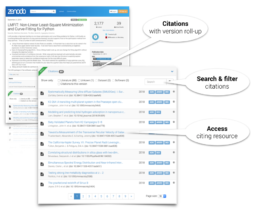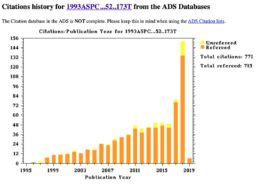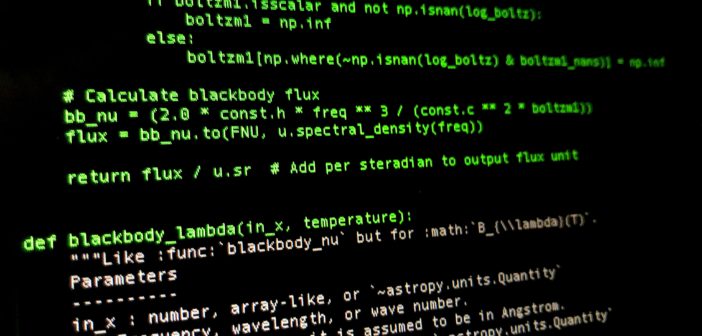In today’s world of astronomy research, software is centrally integrated into nearly everything we do. Among countless applications, we use software to capture observations, to analyze data, to run simulations, and to visualize results.
In many cases, this software was developed by scientists for scientists, with the goal of enabling research tasks. But often, this software is used without any credit being given to the developer. And when credit is given, there’s no standard approach: should authors include separate article sections on software? Or mention it in a footnote and include a url linking to the software package used? These forms of citation do not result in proper tracking or indexing of software use, and since scientists often move between institutions, urls quickly rot, no longer pointing to the correct location.
So how can we ensure that scientific software developers receive the credit they are due? How can we track the use of different types of software in scientific research? And how can we make certain that this software is preserved, accessible, and able to be referenced, for perpetuity?
These are the questions addressed by Asclepias, a project coordinated by the American Astronomical Society and funded by a grant from the Alfred P. Sloan Foundation.

Zenodo is a repository in which developers can upload their software projects and receive persistent identifiers. Thanks to Asclepias, developers can now monitor their software’s use right on their Zenodo repository’s landing page. [Zenodo]
Introducing Asclepias
The goal of the Asclepias project is to promote scientific software into an identifiable, citable, and preservable object. Since the birth of Asclepias at a workshop in 2015, its contributors have worked together to build a technical framework and promote a set of social practices that will make this goal possible.
Asclepias enables the interface between two important actors: Zenodo and the SAO/NASA Astrophysics Data System (ADS).
Zenodo is a software repository in which developers can upload their software projects and receive persistent identifiers — Digital Object Identifiers (DOIs) — to make them easily and uniquely citeable. Zenodo integrates nicely with the popular software hosting service GitHub, allowing GitHub users to easily log in and preserve their pre-existing repositories. Individual versions of each software product are archived as separate entities on Zenodo, and proper authorship information is collected for each version. The software is stored safely in cloud infrastructure and archived for perpetuity.

ADS is a bibliographic index that will now extract and index cited software repositories, making them discoverable and tracking their citation data. [Zenodo]
Where You Come In
The Asclepias project is progressing rapidly: Zenodo is managing software uploads, and ADS is now able to index these software records and make it easy to cite, reference, and discover the software in astronomical research papers. So what’s left to do? Asclepias has now entered its most important stage: outreach to researchers. All the infrastructure in the world is useless if no one adopts it!

Since AAS journals have begun author outreach to encourage software citation best practices, citation counts for astronomical software have increased. An example is this reference for the IRAF system (Image Reduction and Analysis Facility), which has seen a ~150% increase in citation rates since the AAS journals began their efforts midway through 2017. [AAS Journals]
And if you’re writing a research article, you should make sure to cite any software that you used to achieve your scientific results! You can do this by looking up the bibliographic information for the software on ADS. If you submit to AAS journals, you’ll get an extra hand: AAS Data Editors August Muench and Greg Schwarz are here to help you do this correctly (as long as you remember to mention the software that you used!).
When all authors and developers adopt these best practices, astronomy software will be as well recorded and indexed as the astronomy research literature itself. And why stop there? Asclepias was designed to be a concept probe within a single scientific discipline — but if we show this to be successful in astronomy, then we can hope to set the standard for making sure that software gets consistently cited and archived across scientific fields.


2 Comments
Pingback: AAS Nova – New
Pingback: Daily Study Log (2019-02-04) | Study Astrophysics